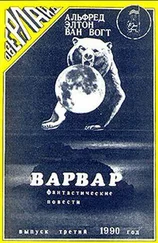
One has not been sufficiently struck by the slowness of the Hindu mind. Especially the Bengali mind, which is like a caricature of it.
It is essentially slow, under control.
His sentences, when one hears them spoken, sound as if they were being spelled. His songs also. His music is a music that takes its time.
The Hindu does not run in the street, nor do his thoughts run in his brain. He walks. He moves step by step.
The Hindu does not rush. He is never elliptic. He does not stand out from the group. He is the exact opposite of the climax. He never bowls you over. In the 125,000 verses of the Ramayanas , in the 250,000 of the Mahabharata there is not a flash.
The Hindu is not in a hurry. He reasons with his feelings.
He likes things to be linked up together.
Sanscrit is the most interlinked language in the world, undoubtedly the finest creation of the Hindu mind. A panoramic language, a language for logicians, flexible, sensitive and attentive, a language of foresight, swarming with cases and declensions.
The Hindu is abundant, and he has this abundance well in hand, liking sweeping views, and seeing them quite well too.
Drona has just died. His father is informed of it.
Unhurried, the father, in 240 quite slow, quite circumstantial, quite regular sentences, asks questions while no one can get in a word.
After that he faints. He is fanned. He awakes. And he goes at it again. A new lot of from 200 to 250 questions.
Then a halt.
Now, equally unhurriedly, and beginning with an account of the flood, a bystander gives his version of the affair.
About an hour and a half is spent in this way.
As there are several wars at home and abroad in the Mahabharata , with several interventions on the part of the gods and heroes, one can easily see why its 250,000 verses are barely sufficient to give an idea of this affair.
His thought is a projectile, its speed always the same.
Needless to say, the center of the Mahabharata is not easy to find. And the epic note is never abandoned an instant. The epic note, in fact, like the erotic note has something naturally false, artificial and forced about it, and appears to be made for the straight line.
When you have compared a brave soldier to a tiger among rabbits, and to a herd of elephants in front of a young bamboo, and to a hurricane carrying ships away, you can continue on like that for ten hours but you won’t get us to raise our heads again. You reached the summit immediately and you go straight ahead.
The erotic works likewise. After two or three rapes, a few flagellations and acts against nature, say what you may, the astonishment wears off, and you fall asleep over your book.
That is because one is not by nature either epic or erotic.
Often I have been struck by the facility with which the Hindus take the ‘sursum corda’ note, and the note of the redemptionist preacher. This note is connected with their way of progressing, with their unilateral way of thought.

What is a thought? A phenomenon that betrays the making of a mind — its frame — and what this frame desires.
We ourselves feel and understand by dividing by two, three and four. The Hindu into sixty-four, thirty-two, rarely nine, almost always into numbers above twenty. He is extremely abundant. Never does he see a situation in three or four subdivisions. 3
Gautama, though he has a contemplative mind, expresses his first illumination thus:
From ignorance come the Sankharas .
From the Sankharas comes consciousness.
From consciousness come name and form.
From name and form come the six provinces.
From the six provinces comes the contact.
From the contact comes feeling.
From feeling comes thirst.
From thirst comes attachment.
From attachment comes existence.
From existence comes birth.
From birth comes old age, death, sorrow, lamentations, suffering, prostration, despair.
A little later (see Digha and Maghima Nahaya) he refutes the sixty-two primordial heresies concerning the Being.
Already a syllogism, or the linking together of three terms seems to me risky. I have no confidence in it. The Hindu, even when a visionary, requires at least nine, eleven, forty or more.
He is never simple, never natural, always applying himself.
When you see one of his thoughts in forty points, what does that prove? Well, it proves that the author is content, that he has succeeded in filling the frame of his mind.
Nor is it a refinement. A sharpening, anything sudden upsets the Hindu: he waits to see what comes next.
The whole, the chain, that is all that matters to him. The subject itself is of no consequence. Whether it has to do with books, religion or love treatises, you always have the twenty to thirty propositions partially linked up again. As though one were hearing scales, immense scales.

One must not forget that India happens to be in the Middle East, like Arabia, Persia, and Asiatic Turkey.
The land of pink, pink houses, Saris edged with pink, valises painted pink, liquid butter, sweetish, flavorless dishes, cold and sickening, and what is more insipid than the poet Kalidasa when he sets out to write insipid poetry?
The Arab, so violent with his language that is like belching, the Arab, hard and fanatic, the Turk, a conqueror and cruel, these are also peoples with nauseating perfumes, rose jam and loukoum.
Take a look at the Alcazar at Granada — you need go no further if you want to know this taste for titillating little pleasures that the Arabs have put into architecture, these irritating arabesques, neither inside nor outside the wall, strictly regulated, complicated and never letting themselves go; outdoors, a hermetic garden frosted with rare strips of greenery, and a small rectangle of water, flat and shallow, and a small spout like a thread, shooting high in the air, and falling with a noise that is petty, and at the same time secret and extenuated. And somehow, from the whole thing one gets the effect of a draught.
But one must see the Taj Mahal at Agra.
Beside it, Notre Dame of Paris is a block of garbage, good for pitching into the Seine, or dumping anywhere, like all, all the other monuments (excepting, perhaps, the Parthenon and a few wooden pagodas).
Take the following ingredients: white bread, milk, talcum powder and water; mix this and make with it an outrageous mausoleum; make a gaping, formidable gateway, big enough to admit a squadron of cavalry, but through which only a coffin entered. Do not forget the oh! so useless windows of marble trellis (for the material of which I speak and of which the edifice is built is an extremely delicate marble, exquisite— almost sickly — that is going to dissolve any minute, a rain will melt it this very evening, though it has been standing intact and virginal for three centuries, with its irritating, disturbing girlish structure). Do not forget the useless marble windows where the so deeply regretted one, the regretted one of the Grand Mogul, of Shâh Jehan may come to linger in the cool of the evening.
In spite of its strictly formal ornamentation, one that is purely geometrical, the Taj Mahal floats. The door gives onto a wave. In the cupola, the immense cupola, there is a trifle too much of something, a mere trifle that everyone is aware of, something that is painful. Everywhere the same unreality. For this whiteness is not real, it has no weight, is not solid. False in the sun. False in the moonlight, a kind of silver fish built by man in nervous excitement.
Читать дальше














